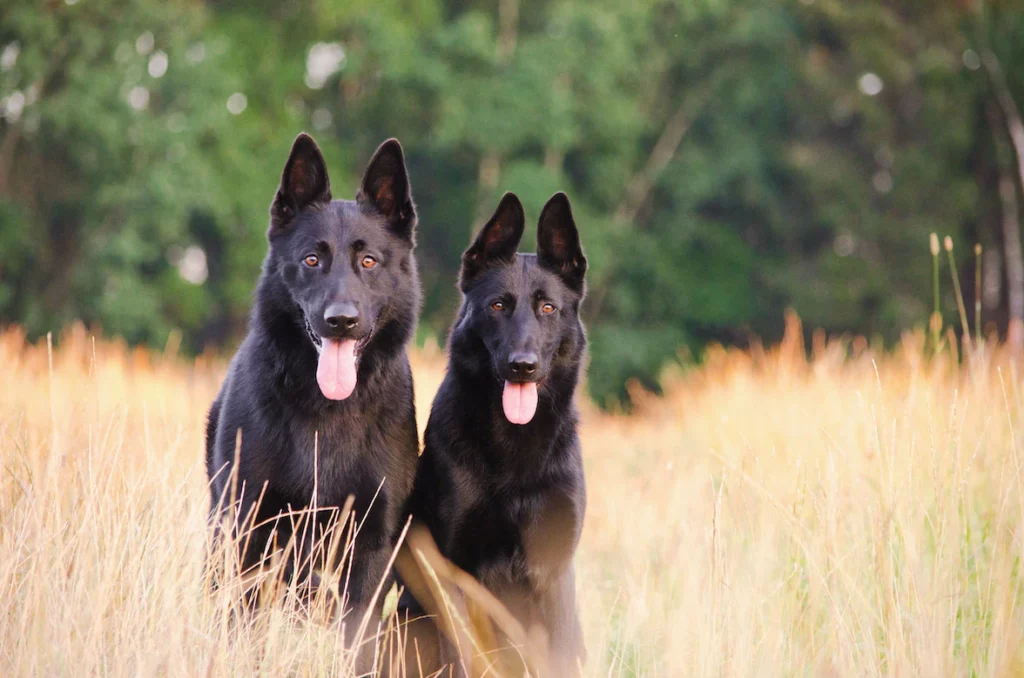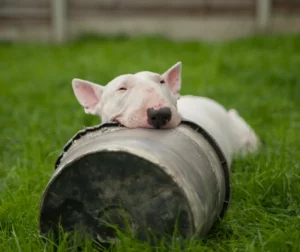How do neutered dogs react to females in heat?
Understanding the impact of pheromones
Pheromones play a crucial role in canine communication, particularly during a female dog’s heat cycle. These chemical signals emitted by the female can affect the behavior of male dogs. Pheromones can trigger a range of reactions, including increased curiosity, restlessness, or a desire to investigate the source of the scent.
Behavioral changes in neutered dogs
Dogs typically exhibit various behavioral changes when exposed to females in heat, even if neutered. While their reactions may differ from intact males, they can still be affected by the presence of a female dog in heat. Owners of neutered dogs should be aware that although the likelihood of successful mating is greatly diminished, it is still possible for some neutered dogs to display mating behaviors.
– Urine marking
One behavioral change commonly observed in both intact and neutered males when exposed to females in heat is urine marking. Neutered males may still exhibit this behavior, albeit to a lesser extent. Marking can serve as a way for the male dog to establish his presence and advertise his availability to the female.
– Lack of focus
Another noticeable change in neutered and intact males is a temporary lack of focus. The presence of a female in heat can distract male dogs, leading to reduced attention and decreased responsiveness to commands. This lack of focus may persist until the female dog’s heat cycle ends or the male is separated from her presence.
– Aggression in Intact Dogs
Aggression can be a potential issue in intact male dogs when they are exposed to females in heat. Unneutered males may become highly territorial and possessive, exhibiting aggressive behavior towards other male dogs or even people. This aggression is driven by the natural instinct to compete for the female’s attention and mating opportunities.
The strong desire to mate with the female can lead to fights and conflicts among males. This aggression can pose a risk to the safety of both the dogs involved and the people around them.
Neutering male dogs significantly reduces the occurrence of aggressive behavior toward other males. By eliminating the hormonal influences, neutering promotes a more harmonious environment and reduces the likelihood of fights or confrontations between male dogs.
What are the benefits of having your male dog neutered?
Having your male dog neutered offers several benefits:
- Population control: Neutering male dogs helps prevent unwanted litters of puppies. This is particularly important considering the overpopulation of dogs in many areas, leading to overcrowded shelters and homeless animals.
- Health advantages: Neutering can reduce the risk of certain health issues in male dogs. It eliminates the possibility of testicular cancer, and it can also lower the risk of prostate problems, such as infections and enlargement.
- Behavior modification: Neutering can positively influence your dog’s behavior. It helps reduce or eliminate behaviors driven by sexual motivations, such as roaming, urine marking, and aggression toward other male dogs. Neutered dogs often exhibit improved focus and a more balanced temperament.
- Reduced aggression: Neutering can help mitigate aggression in male dogs. Without the influence of testosterone, neutered dogs are generally less likely to engage in territorial or insecurity-related aggression, making them safer and more predictable companions.
- Runaway prevention: Intact male dogs are more prone to wandering in search of a mate. Neutering significantly reduces this behavior, as it reduces the drive to seek out females in heat. This helps keep your dog safe and prevents potential conflicts with other animals or other accidents.
- Enhanced quality of life: Neutering can contribute to a longer and healthier life for your male dog. By reducing the risks of certain diseases and preventing unwanted behaviors, neutering can help ensure a more enjoyable and fulfilling life for your furry companion.
It is important to consult with a veterinarian to determine the optimal timing for neutering your male dog, as the age at which the procedure is performed can influence some of these benefits.
How does the timing of neutering affect the behavior of dogs?
Dogs that are neutered before reaching sexual maturity experience a more pronounced impact on their behavior. Sexual maturity in dogs typically occurs between the ages of 6 to 12 months, although the exact timing can vary depending on the breed and individual dog.
Smaller breeds tend to reach sexual maturity earlier, sometimes as early as 6 months, while larger breeds may take closer to 12 months or even longer. It’s important to note that individual variations exist, and it is best to consult with a veterinarian for a more precise assessment of sexual maturity in a specific dog.
Reduced mating instincts in dogs neutered before sexual maturity
Neutering before sexual maturity significantly reduces the production of testosterone, the hormone responsible for driving sexual motivation and mating behaviors in intact males.
The behavior of dogs neutered after sexual maturity
Dogs that are neutered after reaching sexual maturity may still retain some of their mating instincts despite the procedure.
Retained mating behaviors in some neutered dogs
While the drive to mate is reduced in neutered dogs due to the removal of testosterone-producing organs, some may still exhibit behaviors such as following and attempting to mate with females in heat.
What is the procedure for neutering a male dog?
Neutering is a surgical procedure performed on male dogs to remove their testicles, which are the primary reproductive organs responsible for spermatogenesis and testosterone. The procedure is performed by a veterinarian under general anesthesia and involves the following steps:
1. Preoperative examination
Before the surgery, the veterinarian will conduct a thorough examination of the dog to ensure that he is healthy and fit for the procedure. This examination may include blood tests and other diagnostic tests to assess the dog’s overall health.
2. Anesthesia administration
To ensure the comfort and safety of the dog during the surgery, general anesthesia is administered. This involves the use of medications that induce a temporary loss of consciousness, ensuring that the dog does not experience pain or discomfort during the procedure.
3. Preparation and sterilization
Once the dog is under anesthesia, the surgical area, typically the scrotum, is thoroughly cleaned and sterilized to minimize the risk of infection. The dog’s body is also carefully positioned to allow the veterinarian to perform the surgery with ease.
4. Incision and recovery
The veterinarian makes a small incision in the scrotum, exposing the testicles. Each testicle is then removed. Then, the veterinarian closes the incision using surgical sutures or surgical glue. The incision is usually small and does not require extensive stitching. The veterinarian may also apply an antibiotic ointment or dressing to promote healing and prevent infection.
6. Postoperative care
Following the surgery, the dog is closely monitored during the recovery period. Pain medication and antibiotics may be prescribed to manage discomfort and prevent infection. The dog’s activity may be restricted for a few days to allow for proper healing, and the owner will receive instructions on how to care for the incision site and monitor the dog’s recovery at home.

If you are interested in learning more about canine behavior, check out these articles:






